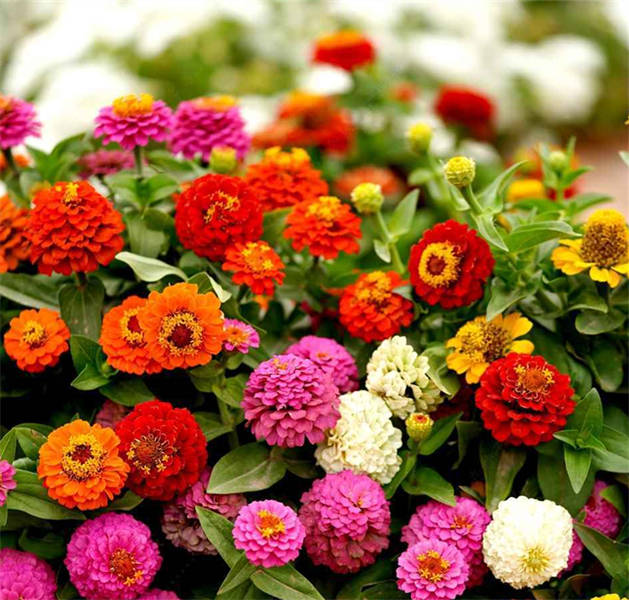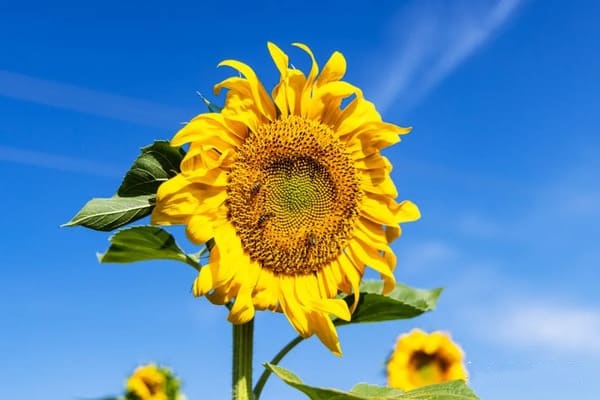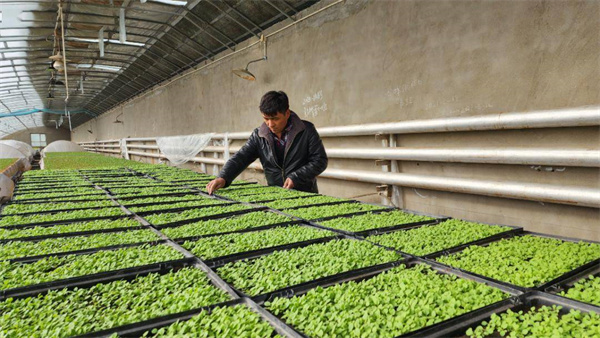
Tagetes erecta L., also known as Aztec marigold, Mexican marigold, big marigold, and African marigold, belongs to the family Asteraceae. Tagetes erecta is an annual herbaceous flower. It is native to Mexico. Due to its strong adaptability, it is now widely planted all over the world and is cultivated in both north and south of China. It has been cultivated for a long time. In recent years, many new hybrid varieties with different flower types and variable colors have been developed.
In addition, there are about 30 species in the genus Tagetes. Plants of the same genus that can be viewed include T. patula, T. lucide, T. tenuifclia, etc. Among them, small marigold also called French marigold, red-yellow grass. It and marigold are the two most commonly cultivated plants of the genus Marigold. The plant height of a small marigold is 30cm to 40cm, the inflorescence is small, and the flower color is yellow or orange, with purple and red spots, which looks like the hyacinth eyes on the feathers of a peacock, so it is named peacock marigold in China, and it is the main material for hybrid breeding with marigold.
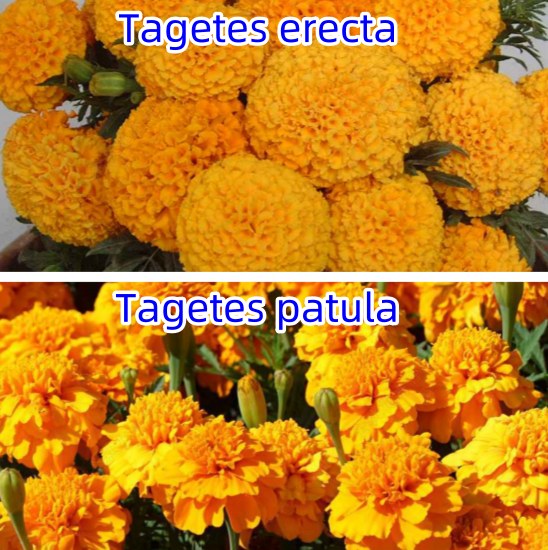
hybrid marigold
The F1 generation hybrid marigold has strong growth and strong adaptability, has no strict requirements on soil and fertility, has large and colorful flowers, short plants, excellent ornamental effects in group arrangements, and strong stress resistance. It is deeply loved by gardeners.
As a professional flower and vegetable seed nursery company in China, based on the growth habits of marigold and many years of planting experience in luteseeds, we will introduce the cultivation and management technology of F1 marigold.
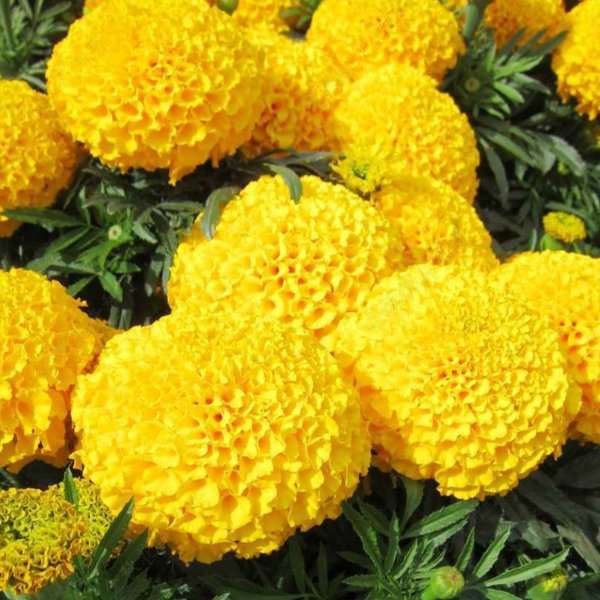
Characteristic properties of marigold
The first generation of marigold hybrids is shorter and stockier than ordinary marigolds, with a plant height of 25-30 cm, strong branching force, a flower diameter of more than 9 cm, double flowers, hydrangea-shaped flowers, and a honeycomb surface of the corolla, with yellow, Orange and white colors. The flowering period is earlier. Sowing in the greenhouse in February will bloom in May. Sowing in the greenhouse in early March will bloom in late June, which takes about 80 days.
F1 Marigold cultivation and management techniques
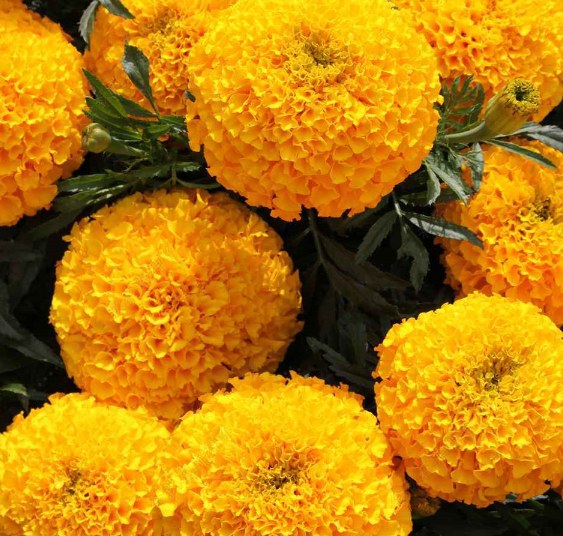
Sowing time and flowering time control
- The flowering period control of marigold mainly depends on its sowing time. Under normal circumstances, it takes 90 days from sowing to full flowering (during the entire growth period, when the temperature is low, it takes a long time; when the temperature is high, the opposite is true).
Sowing and seedling management
- Seedbed preparation: The seedbed can be placed in a flower room or a plastic greenhouse. The seedbed is 1-1.5 meters wide, and the length is determined according to needs. The seedbed substrate is preferably 50% humus soil mixed with 50% pastoral soil, and the soil should be fully mixed with carbofuran and sulfonium in a ratio of 300:1:1 to disinfect the soil and prevent pests and diseases. The seedbed should be level and the soil particles should be finely crushed.
- Sowing and management: Use furrowing and drilling method, with row spacing of 15 cm. The sowing depth is 1-2 cm. After sowing, it should be covered with a layer of fine soil. Use a fine watering can to spray enough water, and spray water 1-2 times a day to keep the greenhouse temperature at 20-25 degrees Celsius. Seedlings will begin to emerge in about 5 days, and all the seedlings will emerge in about 2 weeks. When the seedlings grow 2-3 leaves, apply a thin mixture of nitrogen and potassium fertilizer once. At the same time, watering, weeding and other management are carried out, and nitrogen-potassium mixed fertilizer is applied once after 7 days.
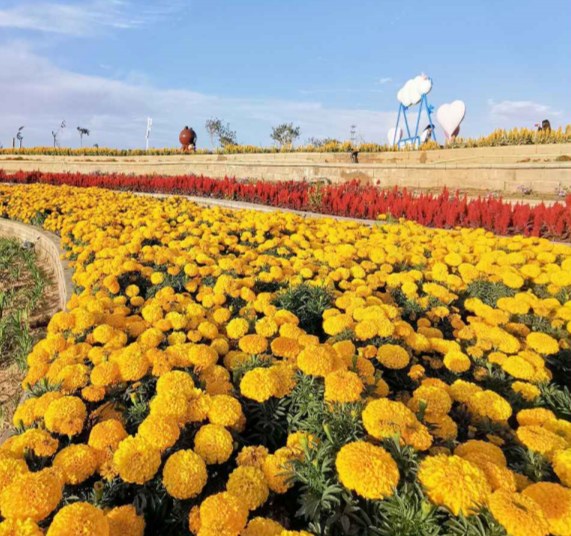
Confirm planting
- When the seedlings grow to 3-4 true leaves, pinch them first, and then transplant the seedlings to the field (the seedlings that bloom in May should be planted in the greenhouse). Before transplanting, level the ground and apply enough base fertilizer. Choose a cloudy or sunny day evening to move the seedlings out of the greenhouse, plant them with a row spacing of 25 × 25 cm, and water them as they are moved and planted.
Cultivation and management
- Temperature: The suitable temperature for marigold growth is 20-25 degrees Celsius. If it is higher than 30 degrees Celsius or lower than 12 degrees Celsius, it will grow slowly. In spring and autumn, you should pay close attention to temperature changes, and when the temperature is higher than 30 degrees Celsius, open the skylight in time for ventilation. If the temperature is too high on a sunny day, you can stop heating and open the skylight for ventilation. As long as the temperature is maintained above 12 degrees Celsius, marigolds can bloom normally.
- Light: Marigold is a light-loving plant, and sufficient light can significantly improve the quality of the flowers.
- Fertilizer and water: Marigold is an annual herbaceous plant with a long flowering period and requires a lot of nutrients. Therefore, fertilizer and water management throughout the growing season is very important. Marigold is a potash-loving plant, and its fertilization ratio is N:P:K=15:8:25. During the growing season, it should be topdressed every half month or so. During the peak flowering period, 0.5% potassium dihydrogen phosphate can be used for foliar top dressing. For areas with a high pH value of irrigation water, drip irrigation should be used instead of using large amounts of warm water when watering. Drip irrigation not only saves water but also prevents the soil from returning to salt. Where conditions permit, the drip irrigation water can be treated and the pH value of the water can be reduced with acidic substances before reuse. In addition, the water temperature of irrigation, especially during spraying, should not be too different from the ambient temperature, otherwise it will easily cause plant diseases.

Maintenance and management during the potting period
- Marigolds need to be transplanted into a pot 15 days before flowering. Choose a flower pot with a diameter of 20 cm and a height of 16 cm, and transplant the seedlings into the pot. Transplant in the evening on a sunny day, or throughout the day on a cloudy day. Pour enough water for the first time after potting, and then spray or water appropriately depending on the seedlings and climate conditions until they survive and enter the normal maintenance and management stage. In order to supplement the nutrients of the newly planted seedlings, fertilize outside the roots in the evening about 5 days after planting, and spray the leaves once with a mixture of 800 times potassium dihydrogen phosphate and 600 times urea. After transplanting survives in about 7 days, top-dress with nitrogen and phosphorus mixed fertilizer every 7-10 days. During the entire maintenance and management process, the flowerpots should be moved once every 20 days to prevent the roots from penetrating into the ground.
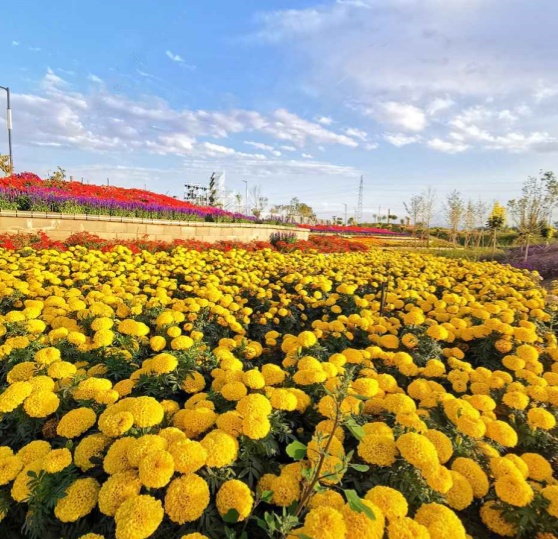
Pest and disease control
- Marigold seedlings are susceptible to damping-off disease. Pay attention to soil disinfection and spray 1000 times thiophanate methyl or 75% chlorothalonil 600 times immediately to prevent and control the disease.
- Leaf miner is a serious insect pest that has occurred in the Hexi Corridor area in recent years, and it has caused great damage to marigolds.
- Prevention and control methods: Spray pesticides to prevent larvae when damage first appears. To prevent and control larvae, spray 2-3 times continuously. Pesticides can be 40% dimethoate EC 1000 times and 50% dichlorvos EC 800 times.
- Red spider mites are also infested by marigolds. The main insect pests in summer can be controlled by spraying 1500 times of 40% Dimethoate EC. During the flowering period, rats are susceptible to damage.
- In the early flowering period, poison is mixed with vegetable stems and leaves and placed around the field and near mouse holes for early prevention and control.
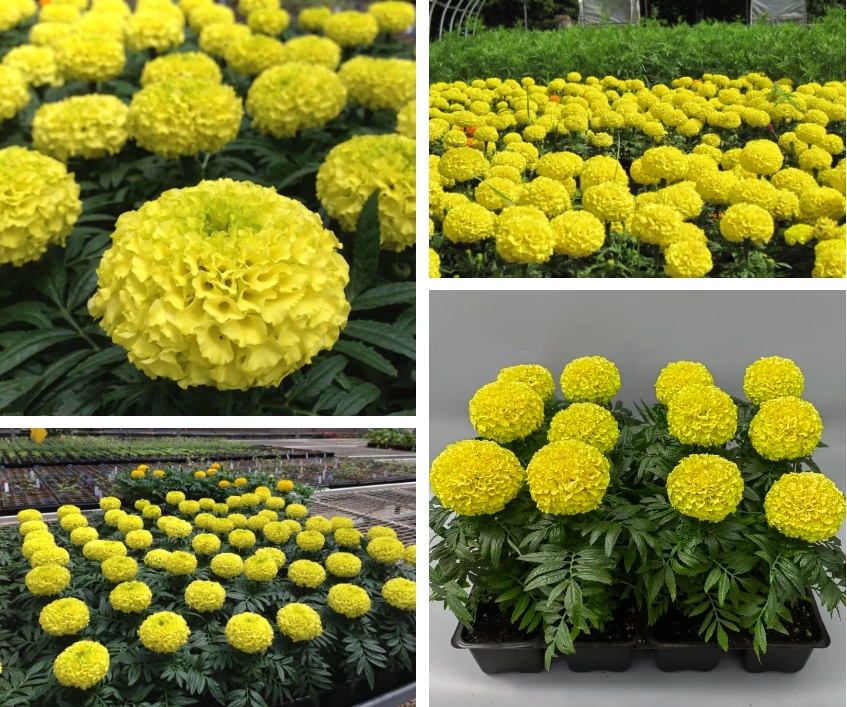
Application of marigold pigments
- Pigment Marigold contains lutein and flavin fatty acid esters, such as lutein dipalmitate (helenien) and other lutein compounds. The natural yellow pigment is an antioxidant with excellent performance and is widely used in food, feed, and medicine. In fields such as the food industry and chemical industry, natural yellow pigments have the advantages of being pollution-free, good in performance, affordable, and widely used, and can significantly improve the appearance, color, and quality of industrial products.
- Therefore, with the intensification of industrialization, the application fields of natural yellow pigments will become larger and larger, and the market prospects are very broad. Planters are welcome to actively plant them.

Growth habits of marigold
Marigold is a tropical plateau plant that likes cool and warm nature. However, after long-term cultivation, its adaptability has been greatly enhanced and it can withstand summer heat and short-term low temperatures of 3°C to 5°C. It likes full sun and can grow in shade, but it will bloom less. No matter the soil, it can grow luxuriantly in general flower beds and courtyards, but the flowers in well-drained, fertile and moist soils are still the most colorful. Marigolds are more tolerant to drought, so those cultivated in the open field generally do not need to be watered except in summer and dry weather, and potted plants should not be overwatered. Marigold has rare diseases and is one of the easier flowers to manage.
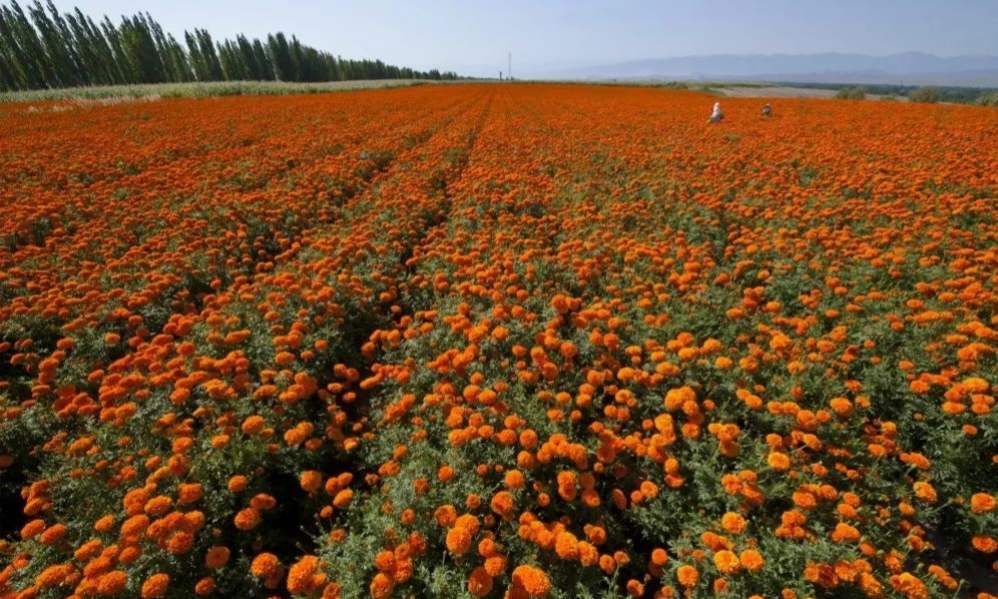
Marigold hybrids, in particular, deserve vigorous promotion. Marigold is mostly propagated by sowing, and the seeds germinate easily. The optimum temperature for germination is 21°C to 22°C, and it grows vigorously at a temperature of 15°C. Early-flowering varieties can bloom 60 days after sowing, while late-flowering varieties take about 90 days to bloom. It has strong cultivability and is easy to survive after transplanting.

